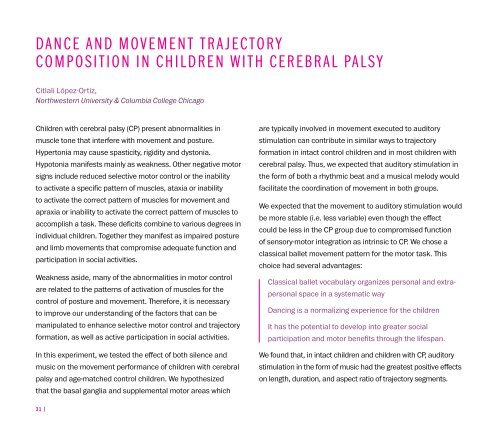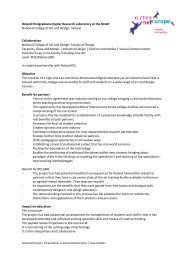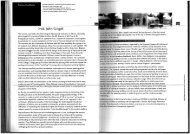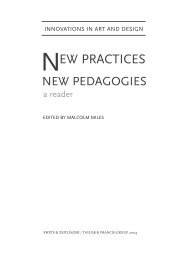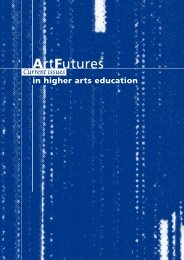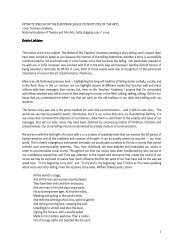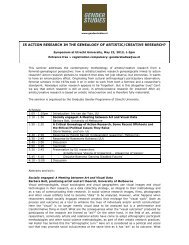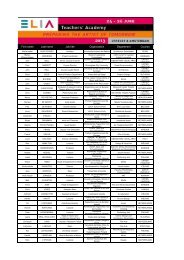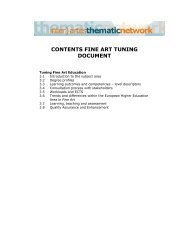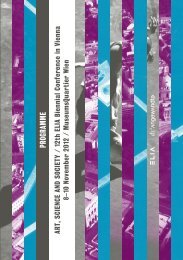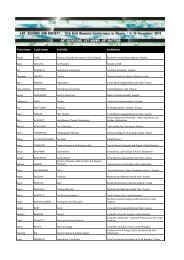claiming creativity - Elia
claiming creativity - Elia
claiming creativity - Elia
Create successful ePaper yourself
Turn your PDF publications into a flip-book with our unique Google optimized e-Paper software.
Dance and Movement Trajectory<br />
Composition in Children with Cerebral Palsy<br />
Citlali López-Ortiz,<br />
Northwestern University & Columbia College Chicago<br />
Children with cerebral palsy (CP) present abnormalities in<br />
muscle tone that interfere with movement and posture.<br />
Hypertonia may cause spasticity, rigidity and dystonia.<br />
Hypotonia manifests mainly as weakness. Other negative motor<br />
signs include reduced selective motor control or the inability<br />
to activate a specific pattern of muscles, ataxia or inability<br />
to activate the correct pattern of muscles for movement and<br />
apraxia or inability to activate the correct pattern of muscles to<br />
accomplish a task. These deficits combine to various degrees in<br />
individual children. Together they manifest as impaired posture<br />
and limb movements that compromise adequate function and<br />
participation in social activities.<br />
Weakness aside, many of the abnormalities in motor control<br />
are related to the patterns of activation of muscles for the<br />
control of posture and movement. Therefore, it is necessary<br />
to improve our understanding of the factors that can be<br />
manipulated to enhance selective motor control and trajectory<br />
formation, as well as active participation in social activities.<br />
In this experiment, we tested the effect of both silence and<br />
music on the movement performance of children with cerebral<br />
palsy and age-matched control children. We hypothesized<br />
that the basal ganglia and supplemental motor areas which<br />
are typically involved in movement executed to auditory<br />
stimulation can contribute in similar ways to trajectory<br />
formation in intact control children and in most children with<br />
cerebral palsy. Thus, we expected that auditory stimulation in<br />
the form of both a rhythmic beat and a musical melody would<br />
facilitate the coordination of movement in both groups.<br />
We expected that the movement to auditory stimulation would<br />
be more stable (i.e. less variable) even though the effect<br />
could be less in the CP group due to compromised function<br />
of sensory-motor integration as intrinsic to CP. We chose a<br />
classical ballet movement pattern for the motor task. This<br />
choice had several advantages:<br />
Classical ballet vocabulary organizes personal and extrapersonal<br />
space in a systematic way<br />
Dancing is a normalizing experience for the children<br />
It has the potential to develop into greater social<br />
participation and motor benefits through the lifespan.<br />
We found that, in intact children and children with CP, auditory<br />
stimulation in the form of music had the greatest positive effects<br />
on length, duration, and aspect ratio of trajectory segments.<br />
31 |<br />
| 32


